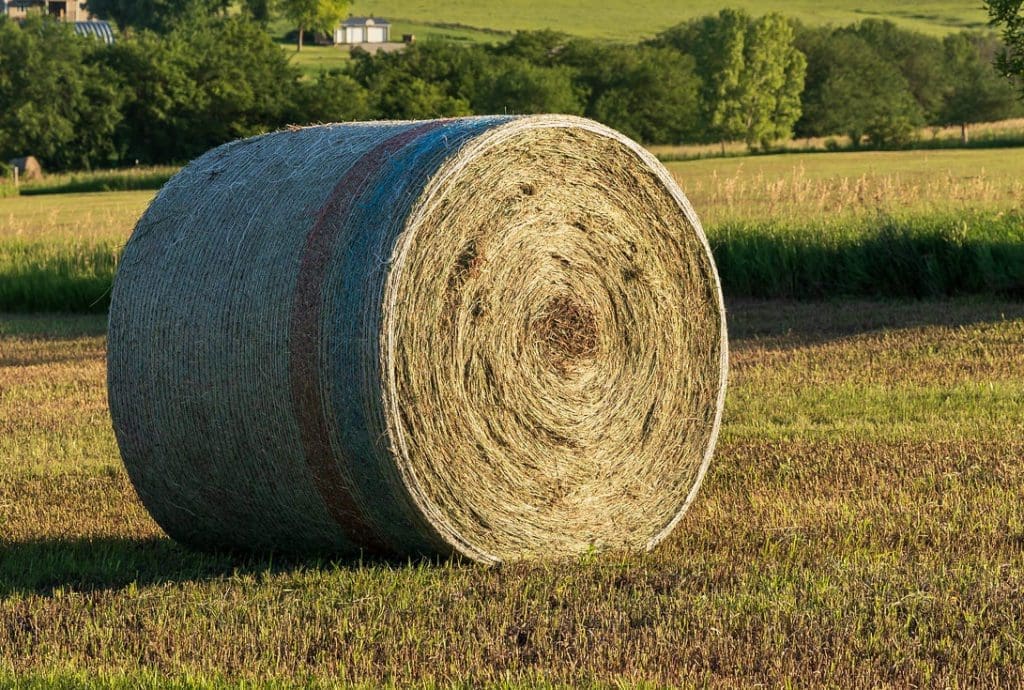By Lisa Moser, K-State Research and Extension news service
Manhattan, KS — For the health-conscious consumer, time spent reading the nutrient profiles of food packages is an important strategy to maintain a well-balanced diet.
In much the same way, beef producers who know the nutrient profile of the hay they are feeding their herds are better able to match the right supplement strategy to meet the needs of the cow, said the Kansas State University Beef Cattle Institute experts on a recent Cattle Chat podcast.
“For a dry cow, the nutrient needs are much lower than for a first-calf heifer or lactating cow, so by doing hay testing, producers can use that information to deliver the highest quality hay to the females that need it the most,” said K-State veterinarian Bob Larson.
The experts said not all hay necessarily needs to be tested annually, but there are times when it is important to test.
“Producers who can fairly accurately estimate the quality of hay based on previous testing or many years of monitoring cow condition won’t necessarily need to test hay as long as it is compared to hay harvested at about the same maturity from the same field or pasture,” Larson said.
He noted that because typically much less is known about purchased hay compared to raised hay, off-farm hay should almost always be tested prior to purchasing.
Nutritionist Phillip Lancaster said it is beneficial to evaluate hay that is newly acquired.
“When testing, there are two main things to look at on the report: the amount of protein, and some estimate of digestibility,” Lancaster said. “Total digestible nutrients (or TDN) will help us know how much energy is in the hay, and that is the nutrient that cattle need in the greatest quantity.”
Veterinarian Brad White added that it is important to get a correct sample of the hay when testing.
“You don’t have to test every bale, but you do need to get a representative sample from the cuttings. For guidelines on how to properly collect the sample, reach out to the local county extension office,” White said.
Snake bite and managing abscesses
K-State’s beef cattle expert also talked about managing snake bites and abscesses in cattle.
“Cattle experiencing snake bites are not common, but when they do happen, it is a memorable experience because the tissue at the site of the bite will swell considerably,” Larson said.
He added that the snake bite is typically not fatal to the beef animal.
Veterinarian Brian Lubbers added: “Sometimes cattle will develop a secondary infection that can be fatal, but that is not common.”
Larson and Lubbers agree that the best treatment is comfort care.
“We try to manage them so that the condition doesn’t get worse and intervene with treatments on an individual basis,” Lubbers said.
Along with snake bites, sometimes cattle will develop unrelated abscesses on their bodies, said the experts.
“Cattle will sometimes be injured by a wire or stick that penetrates the skin and an abscess can result,” Larson said.
When that happens, Lubbers said the object will need to be removed before the wound can begin to heal.
The bottom line, White said, is that whenever swelling on an animal is detected, it is important to investigate.
“Get the cattle in the barn or a chute where you and your veterinarian can examine them because different conditions will result in different treatments,” White said.
To hear the full conversations for either of these topics, listen to the BCI Cattle Chat podcast online.













